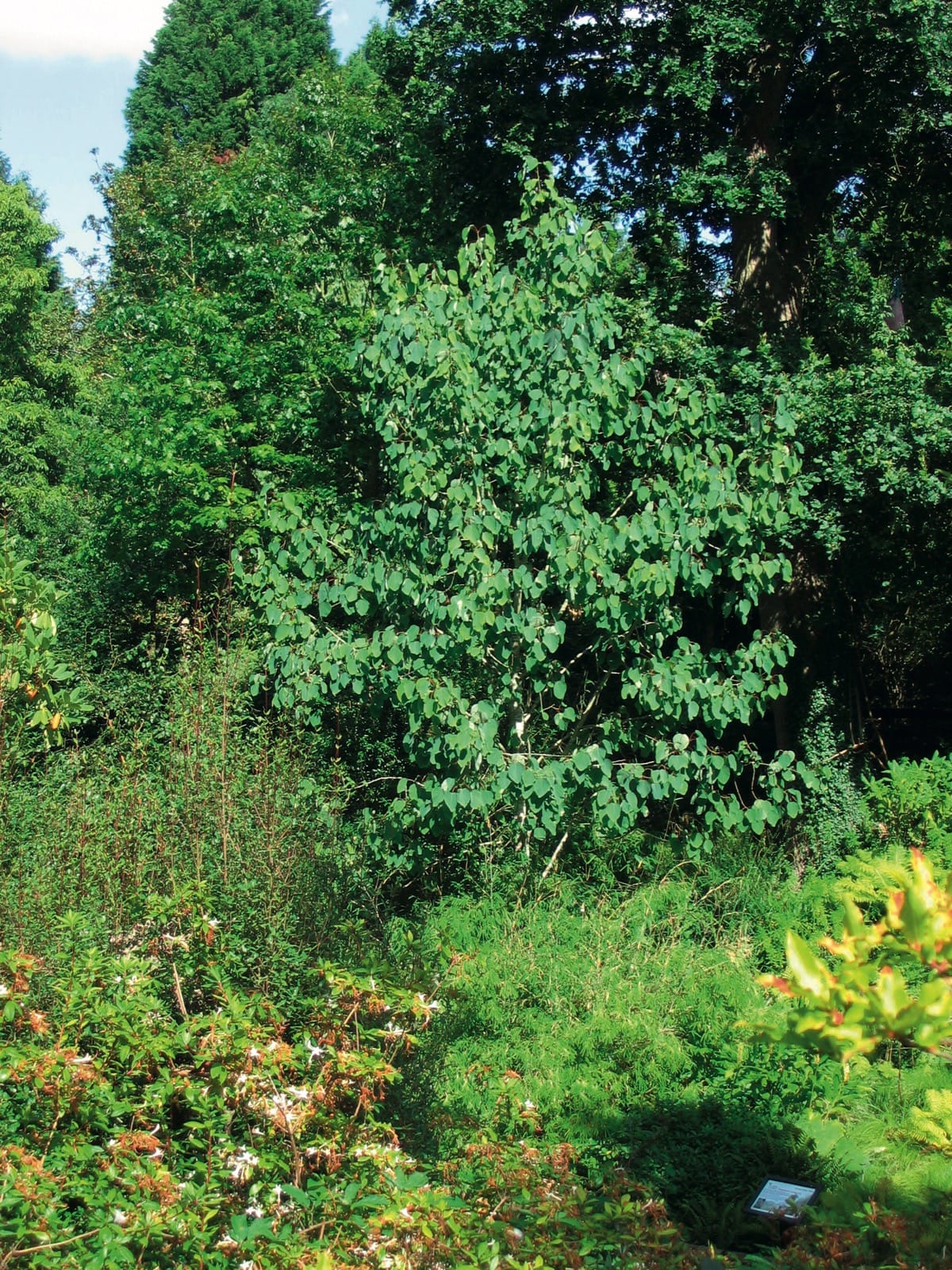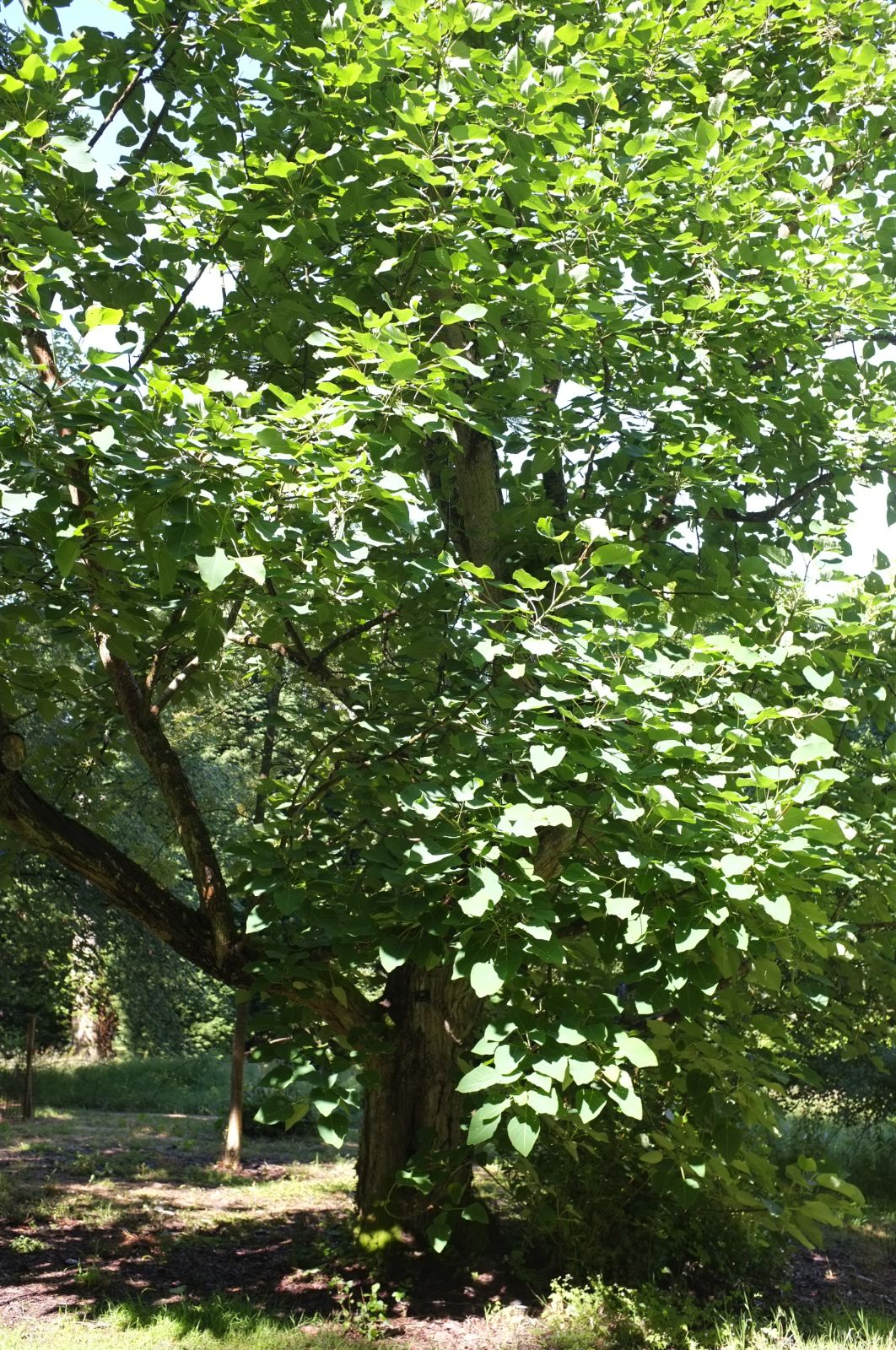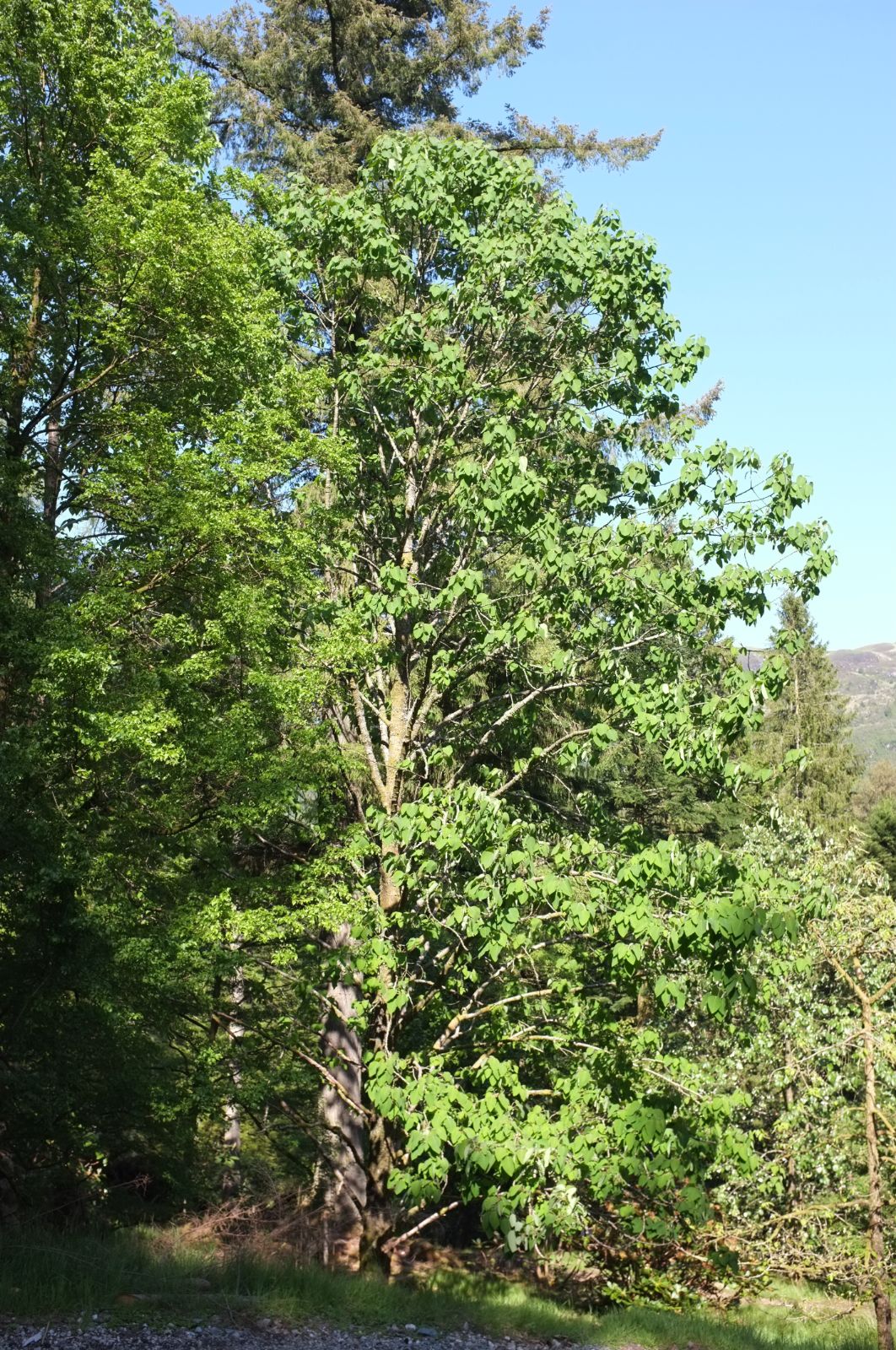Populus glauca
Credits
Article from Bean's Trees and Shrubs Hardy in the British Isles
Article from New Trees by John Grimshaw & Ross Bayton
Recommended citation
'Populus glauca' from the website Trees and Shrubs Online (treesandshrubsonline.
Genus
Synonyms
- P. jacquemontiana Dode var. glauca (Haines) Kimura
Other taxa in genus
- Populus acuminata
- Populus adenopoda
- Populus alba
- Populus angulata
- Populus angustifolia
- Populus balsamifera
- Populus × berolinensis
- Populus × canadensis
- Populus candicans
- Populus canescens
- Populus ciliata
- Populus deltoides
- Populus fremontii
- Populus × generosa
- Populus grandidentata
- Populus heterophylla
- Populus koreana
- Populus lasiocarpa
- Populus laurifolia
- Populus maximowiczii
- Populus nigra
- Populus purdomii
- Populus sargentii
- Populus simonii
- Populus szechuanica
- Populus tremula
- Populus tremuloides
- Populus trichocarpa
- Populus tristis
- Populus wilsonii
- Populus yunnanensis
This little known poplar was described in 1906 from specimens collected in Sikkim. It also occurs in east Nepal, whence it has been introduced by A. D. Schilling. The leaves are broadly ovate, up to 8 in. long and 7 in. wide, shallowly cordate at the base, finely serrated, glaucous, finely downy beneath; petioles up to 51⁄2 in. long. Flowers often bisexual. Rachis of catkins and the capsules hairy. It is of uncertain affinity but was considered by Schneider to be allied to P. wilsonii.
The Schilling introduction (1983) consisted of five seedlings, three now permanently planted out at Wakehurst Place in Westwood Valley, where they are proving hardy. P. glauca promises to be an ornamental poplar, with fine glaucous foliage giving good autumn colour.
From New Trees
Populus glauca Haines
Synonyms: P. jacquemontiana Dode, P. wilsonii C.K. Schneid.
Tree to 16 m. Bark grey. Branchlets brown or purplish brown, villous when young; buds softly hairy. Leaves deciduous, 18–25 × 15–20 cm, broadly ovate, purplish bronze when unfolding, upper surface blue-green, glabrous, lower surface glaucous green and pubescent along the veins, margins sharply serrulate, apex acute; petiole short, red and flattened, downy. Flowers typically hermaphrodite; catkin rachis densely pubescent, stamens 6–12. Fruiting catkin very long; capsule subglobose, pubescent and usually two-valved. Flowering April to June (China). Grierson & Long 1983, Fang et al. 1999, Schilling 1999. Distribution BHUTAN; CHINA: Sichuan, Xizang, Yunnan; INDIA: Sikkim; NEPAL. Habitat Mixed broadleaved forest, between 2500 and 3300 m asl. USDA Hardiness Zone 8–9. Conservation status Not evaluated. Illustration NT653. Cross-reference S392. Taxonomic note Populus glauca is recognised as a full species by Grierson & Long (1983) and Fang et al. (1999), and also by Eckenwalder (1996), who includes P. wilsonii (described by Bean and Krüssmann: B327, K437) as a synonym. Kimura (1982) and Schilling (1999) treat it as a variety of P. jacquemontiana (often written incorrectly as ‘P. jacquemontii’).
Populus glauca has been enthusiastically described by Tony Schilling (1999), who claims its first introduction to British horticulture, with seedlings he collected from the Chepa Khola valley in the Gurkha Himal of Nepal (as Schilling 2620), in April 1983. These were the foundation of the stock most frequently seen in the United Kingdom, but it was also collected in eastern Nepal by the Kew-Edinburgh-Kanchenjunga Expedition (KEKE 1198) in 1989, and by Peter Cox in 1985. Credit for this poplar’s first introduction to cultivation goes, however, to Harry van de Laar, who brought a single seedling to the Netherlands from the Milka Danda ridge of eastern Nepal in 1973. This material has been commercially propagated by Dutch nurseries, and is probably the source of most specimens currently growing in continental Europe. It is not totally hardy there (Schilling 1999).
The tree of Schilling 2620 at the Hillier Gardens, appropriately growing near the Gurkha memorial, is the British champion, measured for New Trees at 9.7 m (18 cm dbh) in 2008 by H. Brown. It is notorious for its late emergence – the first flush often not appearing until June or even early July – but the leaves are worth waiting for, as they start bronze-purple, becoming bluish green on their upper surfaces, and strongly glaucous below. The effect of the tree seen against more normal greens is very striking. Although it seems to be hardy in British conditions it is not very fast growing, and might do better in areas with warmer summers.



